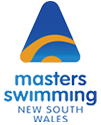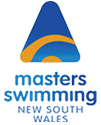
Taper and the ‘Older’ Athlete by Coach Karlyn Pipes
The “big” meet looms on the horizon. All season long you have worked hard, met training goals and maintained focus. Now comes the taper. Yikes! How long should you taper? How much should you train? What happens if the taper doesn’t work?These are common fears shared by both swimmers and coaches alike.
Why do we FEAR the taper? It’s because we are diving into the unknown with no way of predicting the outcome and worst of all, no guarantees of faster times. While you can find scientific studies and plenty of advice from respected age group and collegiate coaches, there is very little information regarding taper and the older athlete. So, what do we know?
• The older you are, the longer it takes to rest.
• The bigger your body mass, the longer it takes to rest.
• The less you train, the less you can taper.
• The larger your base, the more you can taper.
Here are eight strategies to help you taper for your next big meet.
Swim fast early. Add race specific speed work twice a week 6-8 weeks PRIOR to the competition. If you wait until the last week to swim fast, your body may not know how to respond leaving you feeling flat at the meet.
Funk phase. It’s extremely common to feel more fatigued in the middle of a taper, than if you were in heavy training. Your body is simply adapting to the “stress” of rest and endorphin withdrawal. Resist the knee jerk response to up your yardage to prove that you are still in shape, as this will only prolong the “funk phase” and negate the process of the taper.
Rest takes time. It is impossible to get real rest on short notice. Instead of a gradual three-week taper, try cutting way back at the beginning of the second week (30-40% of norm) while maintaining some quality work in each session. At the end of the second week assess how you feel and adjust accordingly.
Get race ready. Swim a time-trial or meet 1-3 weeks prior to the main event to practice going off the blocks, race strategy and to check on energy levels. If you are really fatigued, reduce your training even more.
Go the distance. Doing broken swims during the taper is a great way get event specific training while providing you with a recent experience for those tough events such as the 200 fly, 400 IM or distance free. Try 8 x 25’s for the 200 fly, 4 x 100’s or 8 x 50’s for the 400 IM and break freestyle events into sets of 150’s or 100’s, finishing up with 4 x 50’s descend.
Avoid extra activities. With more time on your hands, try not to add any additional athletic activities, household projects or marathon shopping excursions to your schedule. The idea is to REST.
Part of the cycle. Instead of looking at the taper as lost training, consider it an integral and important part of your seasonal cycle. You are still in the water and exercising…just in a different way. When you resume training you will feel refreshed and ready to go for the next season.
Time is on your side. Don’t worry if your taper doesn’t go exactly as planned. After all this is Masters swimming, so you literally have a lifetime to get it right!
About Karlyn Pipes.
In 2002, Pipes set 25 FINA World records, 54 National records, achieved 6 lifetime best times and became the first woman over forty years old to complete the 500-yard freestyle event in less than five minutes with a time of 4:58.98. Stunningly, this time was quicker than the record of 4:59.08, which she had set for the 30–34 age group in 1996.
She has set FINA Masters world records in all four strokes, as well as in the medley and at every distance offered.]Pipes’s records stand the test of time and currently span six age- groups reaching back over twenty five years. She also competed at four FINA Masters World Championships starting with Montreal, Canada in 1994. Stanford in Palo Alto, CA in 2006, Perth, Australia in 2008, and Riccione, Italy in 2012 [ winning all twenty events she entered.
As of 2016, Pipes has set 332 U.S. Masters Swimming national, 6 long distance, and 53 relay records and is an 18-time USMS All-Star achieved by earning the most #1 rankings in an age-group in a year.
After over two decades of swimming in the Masters category, Pipes has become one of the most decorated swimmers in the history of the sport with a lifetime world record tally currently standing at 229.”I love what I do. The difference between now and then is that I swim for myself; not for a coach, not for my mother and not to set records. I swim because it makes me feel good about myself. I feel most alive when I swim.”
(Top 12 Masters Swimmers-Swimming World Magazine, April 2005)

